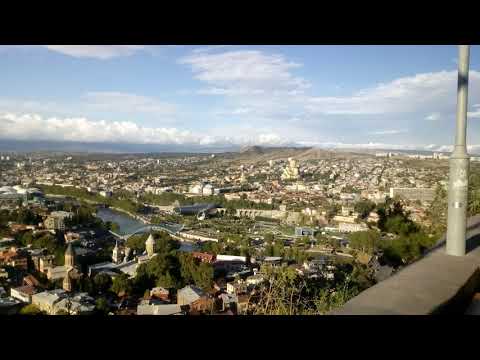Tbilisi, Georgia 28.09.2019 - Travel Video
თბილისი, საქართველო Tbilisi is the capital and the largest city of Georgia, lying on the banks of the Kura River with a population of approximately 1.5 million people. Tbilisi was founded in the 5th century AD by Vakhtang I of Iberia, and since then has served as the capital of various Georgian kingdoms and republics. Between 1801 and 1917, then part of the Russian Empire, Tiflis was the seat of the Imperial Viceroy, governing both Southern and Northern Caucasus. Because of its location on the crossroads between Europe and Asia, and its proximity to the lucrative Silk Road, throughout history Tbilisi was a point of contention among various global powers. The city's location to this day ensures its position as an important transit route for energy and trade projects. Tbilisi's history is reflected in its architecture, which is a mix of medieval, neoclassical, Beaux Arts, Art Nouveau, Stalinist and the Modern structures. Historically, Tbilisi has been home to people of multiple cultural, ethnic, and religious backgrounds, though it is overwhelmingly Eastern Orthodox Christian. Its notable tourist destinations include cathedrals Sameba and Sioni, Freedom Square, Rustaveli Avenue and Agmashenebeli Avenue, medieval Narikala Fortress, the pseudo-Moorish Opera Theater, and the Georgian National Museum. The climate in Tbilisi mostly ranges from 20 to 32 °C (68 to 90 °F) in the summer and 7 to −1 °C (45 to 30 °F) in the winter. Tourism Georgia's growing popularity as an international tourist destination has put Tbilisi on the global travel map. With the country hosting more than 9 million international visitors in 2019, the capital saw major investments in the hospitality industry. It now is the leading tourist destination in the region, offering exquisite cityscapes, Art Deco, Russian, Eastern and Soviet architecture, national museums and galleries, cultural attractions, festivals, historical landmarks and exceptional, traditional Georgian cuisine along with a wide range of international restaurants. The city is well-known, due to its complicated history, as a melting pot of cultures, a diverse metropolis with a palette of attractions. Tbilisi has important landmarks and sightseeing locations. The Parliament and the government (State Chancellery) buildings of Georgia, the Supreme Court of Georgia, the Sameba Cathedral, the Vorontsov's Palace (also known as the Children's Palace today), the National Public Library of the Parliament of Georgia, the National Bank of Georgia, Tbilisi Circus, The Bridge of Peace, and many state museums are in Tbilisi. During the Soviet times, Tbilisi continuously ranked in the top four cities in the Soviet Union for the number of museums. Out of the city's historic landmarks, the most notable are the Narikala fortress (4th–17th century), Anchiskhati Basilica (6th century, built up in the 16th century), Sioni Cathedral (8th century, later rebuilt), and Church of Metekhi, Open Air Museum of Ethnography, Sulfur Bath, and Tbilisi Old City. Beyond traditional attractions, Tbilisi has developed burgeoning nightclub culture which started to attract international media attention in the 2010s. The leading clubs such as Bassiani, Mtkvarze, Khidi, and Café Gallery have featured major international DJs as well as local performers. • Tbilisi, Georgia 28.09.2019 - Travel ... • Tbilisi, Georgia 28.09.2019 - Travel ... • Tbilisi, Georgia 28.09.2019 - Travel ... • Tbilisi, Georgia 28.09.2019 - Travel ... • Tbilisi, Georgia 28.09.2019 - Travel ... • Tbilisi, Georgia 28.09.2019 - Travel ... • Tbilisi, Georgia 28.09.2019 - Travel ...

მსგავსი ვიდეოები

Tbilisi, Georgia 28.09.2019 - Travel Video
Nasib Cafarli

Tbilisi, Georgia 28.09.2019 - Travel Video
Nasib Cafarli

Tbilisi, Georgia 28.09.2019 - Travel Video
Nasib Cafarli

Tbilisi, Georgia 28.09.2019 - Travel Video
Nasib Cafarli

„აკუსტიკა“ - 29 მაისს, 22:30 საათზე
პირველი არხი Georgian Public Broadcaster

#ახალიდღე „ჩვენი ყანჩელი“ - 18 ოქტომბერს გია ყანჩელისადმი მი...
პირველი არხი Georgian Public Broadcaster

ხანძარი სოფელ საყავრესთან
პირველი არხი Georgian Public Broadcaster

აქტუალური თემა მაკა ცინცაძესთან ერთად – საქართველო აქციებიდა...
პირველი არხი Georgian Public Broadcaster